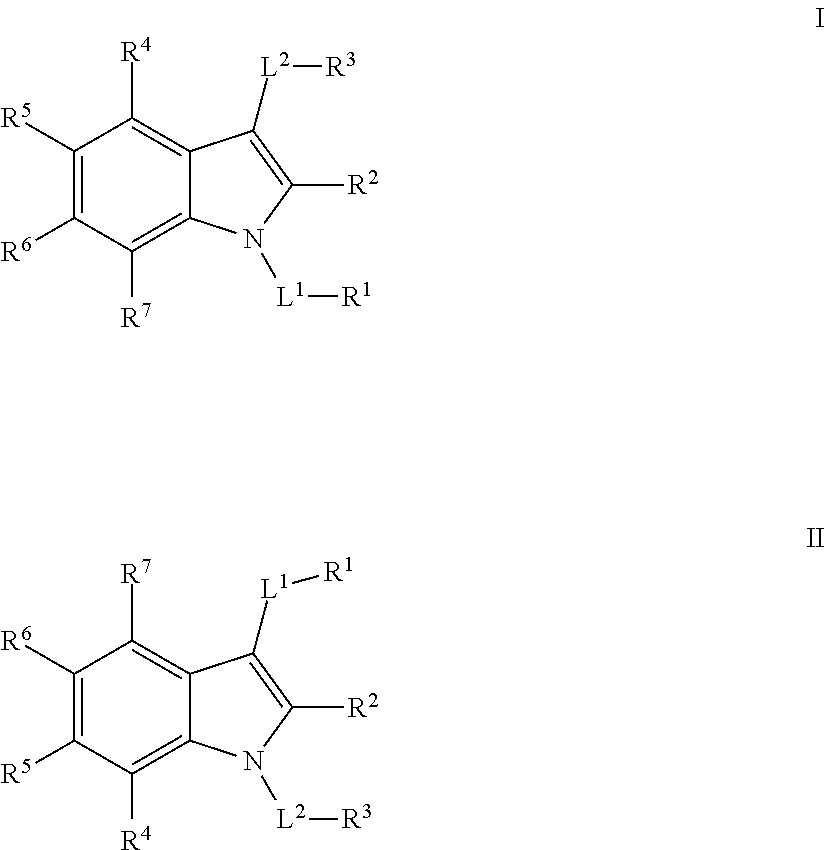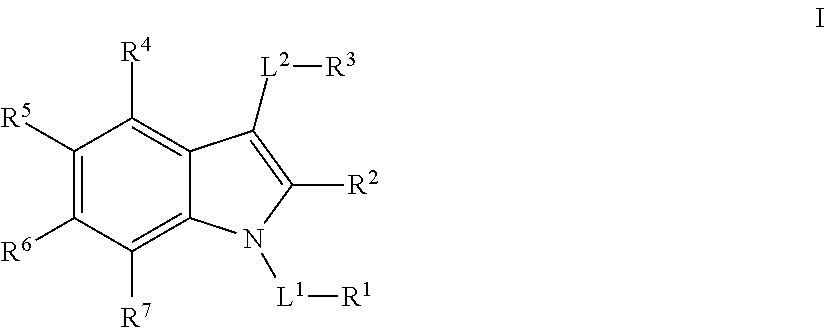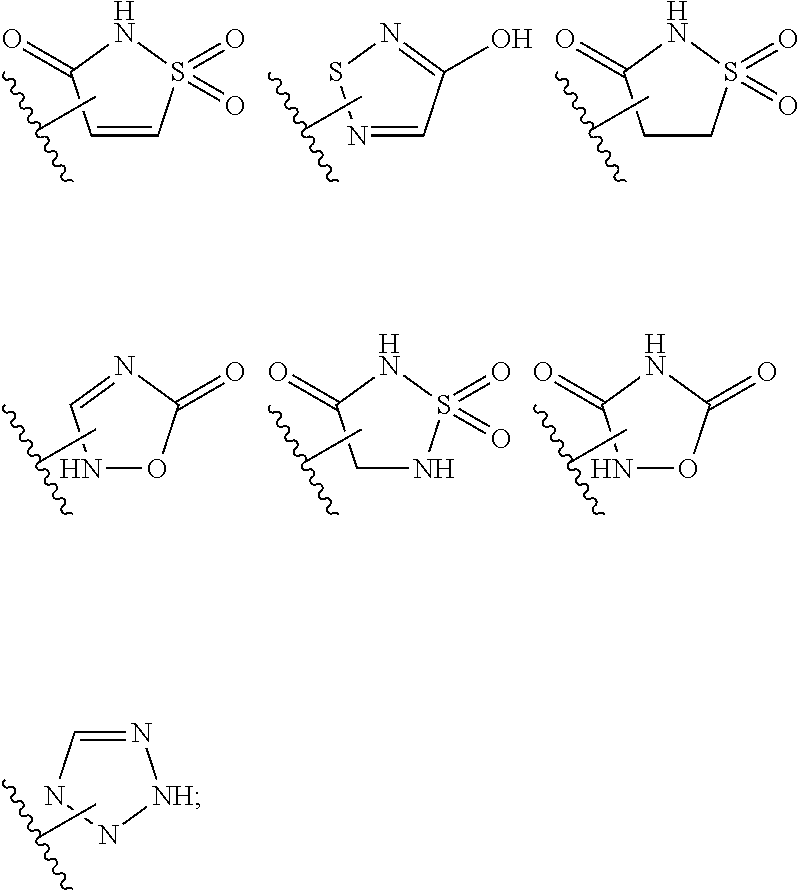Substituted indole mcl-1 inhibitors
a technology of indole and inhibitors, which is applied in the field of substituted indole mcl-1 inhibitors, can solve the problems of major treatment failure, poor prognosis of many cancers, and resistance to chemotherapy, and achieve the effects of improving the prognosis and treatment success ra
- Summary
- Abstract
- Description
- Claims
- Application Information
AI Technical Summary
Benefits of technology
Problems solved by technology
Method used
Image
Examples
example 1
Step D. Example 1
[0514]To a solution of 3-(3-(4-chloro-3,5-dimethylphenoxy)propyl)-1H-indole (115 mg, 0.37 mmol) and t-Bu-isocyanate (130 μL, 1.1 mmol) in CH2Cl2 (0.6 mL) was added BF3-OEt2 (180 μL, 1.5 mmol) at 20° C. The reaction mixture was warmed to 35° C. and stirred for 15 h. The reaction was quenched by addition of NaOAc aqueous solution. Organic layer was separated and concentrated. The residue was dissolved in CH2Cl2 (1.8 mL) and TFA (200 μL) was added at 20° C. The reaction mixture was stirred for 15 h then concentrated. The residue was directly purified by flash chromatography (Combi-flash Rf Hexane / EtOAc gradient 0-10%) to give the title compound as a yellow solid in 110 mg (0.27 mmol). MS (ES) 413.2 (M+H).
Example 2
Preparation of methyl (3-(3-(4-chloro-3,5-dimethylphenoxy)propyl)-1H-indole-2-carbonyl)glycinate
I-2
Step A. Preparation of 6-ethoxy-6-oxo-5-(2-phenylhydrazono)hexanoic Acid
[0515]To a stirring mixture of aniline (1.8 mL, 20 mmol) in 1M HCl (25 mL) and water (5 m...
example 2
Step F. Example 2
[0520]To a solution of 3-(3-(4-chloro-3,5-dimethylphenoxy)propyl)-1H-indole-2-carboxylic acid (100 mg, 0.28 mmol) and H-Gly-OMe HCl (53 mg, 0.42 mmol) in CH2Cl2 (3.0 mL) was added EDC.HCl (87 mg, 0.56 mmol) followed by DMAP (120 mg, 0.98 mmol) at 20° C. The reaction mixture was stirred for 15 h at 20° C. then quenched by addition of 0.5 N HCl. The quenched reaction mixture was extracted with CH2Cl2, washed with brine, dried by MgSO4, filtered and concentrated in vacuo. The residue was purified by flash chromatography (Combi-flash Rf Hexane / EtOAc gradient 0-20%) to give the title compound (95 mg, 0.22 mmol) as a white solid. MS (ES) 429.2 (M+H).
example 3
Preparation of (3-(3-(4-chloro-3,5-dimethylphenoxy)propyl)-1H-indole-2-carbonyl)glycine
I-3
[0521]To a solution of methyl (3-(3-(4-chloro-3,5-dimethylphenoxy)propyl)-1H-indole-2-carbonyl)glycinate (90 mg, 0.21 mmol) in EtOH (1.5 mL) was added 10% LiOH aqueous solution (150 μL, 0.63 mmol). The reaction mixture was stirred for 15 h at 20° C. then quenched by addition of 1M HCl. The reaction mixture was extracted with CH2Cl2 and concentrated in vacuo. The crude product was purified by reserve phase prep. HPLC (Phenomenex Gemini C18, H2O / CH3CN 40-95% 0.01% TFA) to give the title product as a white solid in 75 mg (0.18 mmol). MS (ES) 415.1 (M+H).
PUM
 Login to view more
Login to view more Abstract
Description
Claims
Application Information
 Login to view more
Login to view more - R&D Engineer
- R&D Manager
- IP Professional
- Industry Leading Data Capabilities
- Powerful AI technology
- Patent DNA Extraction
Browse by: Latest US Patents, China's latest patents, Technical Efficacy Thesaurus, Application Domain, Technology Topic.
© 2024 PatSnap. All rights reserved.Legal|Privacy policy|Modern Slavery Act Transparency Statement|Sitemap



